Recent Posts
A Crucial Guide: What to Do in Case of a House Fire
4/4/2024 (Permalink)
A house fire is a frightening and potentially life-threatening situation that demands quick thinking and decisive action. While the hope is to never experience such an event, preparedness can make a significant difference in minimizing damage and ensuring the safety of you and your loved ones. In this blog, we outline essential steps to take in case of a house fire.
Stay Calm and Prioritize Safety
In the event of a fire, maintaining composure is crucial. Panic can hinder clear thinking and swift action.
- Prioritize safety above all else, focusing on immediate evacuation and alerting others.
- Leave the building as quickly as possible. Do not waste time trying to gather belongings.
- If possible, crawl low to the ground to avoid smoke inhalation.
Call Emergency Services
- Once safely outside, call emergency services immediately. Provide your address and details about the fire.
- Do not assume someone else has called; it's crucial to ensure prompt response.
- Under no circumstances should you re-enter a burning building. Fires can escalate rapidly, and the risk is too great.
Use Exit Routes and Fire Escape Plans
- Familiarize yourself with exit routes and fire escape plans in your home. Practice them regularly with your household.
- If you encounter smoke, crawl along the ground where the air is clearer.
- Before opening doors, feel the handle with the back of your hand. If it's hot, do not open the door, as fire may be on the other side.
Stop, Drop, and Roll (If on Fire)
- If your clothes catch fire, remember to stop, drop to the ground, and roll to smother the flames.
- Cover your face with your hands to protect your airway.
- If you must move through smoke, stay low to the ground where the air is clearer.
- Take short breaths through your nose to minimize inhalation of smoke.
Know How to Use a Fire Extinguisher
- If the fire is small and you're confident in using a fire extinguisher, attempt to extinguish it. Ensure you have an escape route.
- Regularly review and practice emergency plans with all members of your household.
- Ensure that everyone is familiar with escape routes and meeting points.
While a house fire is a terrifying prospect, being prepared and knowing what to do can significantly increase your chances of a safe escape. Regularly review and practice fire safety plans with your household, ensuring that everyone is familiar with escape routes and emergency procedures. Prioritize safety, stay calm, and act decisively in the face of a house fire.
Guarding Your Home: The Importance of Mold Inspections in Preventing Infestations
3/5/2024 (Permalink)
Mold, a pervasive intruder, can silently infiltrate homes, causing structural damage and cosmetic issues. In this blog, we'll delve into why regular mold inspections are crucial for maintaining a healthy and resilient home environment.
Early Detection of Moisture Issues
Mold thrives in damp environments. Regular mold inspections can uncover early signs of moisture problems, such as leaks, condensation, or inadequate ventilation. Addressing these issues promptly helps eliminate the conditions conducive to mold growth.
Mold often thrives in hidden or hard-to-reach areas, such as behind walls, beneath flooring, or in crawl spaces. Mold inspections, conducted by professionals, can uncover these concealed sources, preventing the escalation of mold infestations.
Preventing Structural Damage
Mold can compromise the structural integrity of a home, especially if left unchecked. Regular inspections help identify areas where mold may be affecting building materials, allowing for timely intervention to prevent structural damage.
Professional mold inspections provide insights into vulnerable areas of a home and guide preventive measures. By understanding the specific conditions that contribute to mold growth, homeowners can take proactive steps to fortify their homes against potential infestations.
Avoiding Costly Remediation
Timely mold inspections can help homeowners avoid costly remediation efforts. By addressing issues at the early stages, before mold spreads extensively, the need for extensive and expensive remediation is minimized.
The presence of mold can impact the value of a property. Regular mold inspections and preventive measures help maintain property value by ensuring a mold-free environment, appealing to prospective buyers or renters.
Ensuring Indoor Air Quality
Mold inspections indirectly contribute to indoor air quality. Mold spores can affect the air you breathe, and early detection and prevention through inspections help in preserving a clean and fresh indoor environment.
A home free from mold infestations is a safer living environment. Mold inspections contribute to overall home safety by preventing structural issues, preserving property value, and ensuring the longevity of building materials.
Mitigating Liability Risks
In cases where property is leased or rented, the presence of mold can lead to legal complications. Regular mold inspections help mitigate liability risks by ensuring that potential issues are identified and addressed promptly.
Mold often follows water intrusion. Mold inspections help identify areas prone to water intrusion, such as around windows, roofs, or plumbing systems. Addressing these vulnerabilities helps prevent mold-friendly conditions.
Facilitating Regular Maintenance
Incorporating mold inspections into routine home maintenance encourages a proactive approach. By regularly assessing and addressing potential mold risks, homeowners create a resilient home environment that withstands the test of time.
Knowing that your home is regularly inspected for mold provides peace of mind. It assures homeowners that potential issues are being monitored and addressed, contributing to a sense of security and well-being.
Educational Insights for Homeowners:
Mold inspections provide homeowners with educational insights into the factors contributing to mold growth. This knowledge empowers homeowners to make informed decisions about preventive measures and maintenance.
Mold spores can easily spread to other areas of a home if not addressed promptly. Regular inspections help prevent cross-contamination by identifying and isolating affected areas before spores can spread.
The importance of mold inspections is crucial to ensure your property is safe, encompassing the preservation of property value, structural integrity, and overall well-being of a home. Proactively addressing potential issues through regular inspections empowers homeowners to create a safe and resilient living environment, guarding against the subtle threats posed by mold infestations. For professional mold remediation services and expert guidance on cleaning mold damage, contact SERVPRO®.
Danger and Personal Risks Associated with Standing Water in Homes: What You Need to Know
1/18/2024 (Permalink)
Standing water in homes, whether caused by floods, leaks, or plumbing issues, can bring about significant risks to both the property and its occupants. Understanding and addressing these dangers promptly is crucial for ensuring everyone's safety. In this blog, we will explore the potential dangers and personal risks associated with standing water in homes.
Electrical Hazards
Standing water increases the risk of electrical hazards. Water can conduct electricity, leading to potential electrocution if it comes into contact with exposed wiring, outlets, or appliances. It is vital to cut off power to the affected area immediately and involve a qualified professional to ensure it is safe to restore power.
Structural Damage
Excessive water accumulation can weaken the structural integrity of a home. It can cause wood rot, the deterioration of drywall, and damage to foundations, leading to sagging floors, collapsing ceilings, or even structural failure. Prompt action, such as water extraction and proper drying techniques, is crucial to preventing long-term damage.
Mold and Bacterial Growth
Standing water creates a ripe environment for mold and bacterial growth. Mold can cause respiratory issues, allergies, and other health problems. Bacteria in the water may also lead to infections or illnesses. It is essential to address water removal and drying promptly to mitigate the risk of mold formation and bacterial contamination.
Slip and Fall Accidents
Standing water poses a slip and fall hazard, increasing the risk of injury for household members. Water can make surfaces slippery and decrease traction, increasing the likelihood of accidents. It is crucial to exercise caution, use appropriate safety measures like non-slip shoes, and promptly clean up and dry any standing water to prevent accidents.
Contaminated Water
In cases where standing water is a result of floods or sewer backups, the water may be contaminated with harmful substances, including sewage, chemicals, or debris. Contact with contaminated water can lead to various health issues, including infections, gastrointestinal problems, and skin irritations. Proper protective gear and professional assistance are necessary when dealing with contaminated water.
Potential Damage to Belongings
Besides the dangers to occupants, standing water can cause significant damage to personal belongings, including furniture, appliances, electronics, and sentimental items. Waterlogged possessions may become irreparable or require expensive restoration. Quick action, such as removing items from the water and contacting professionals for restoration, can help minimize damage.
Standing water in homes presents numerous dangers and personal risks, including electrical hazards, structural damage, mold growth, slip and fall accidents, contaminated water, and potential damage to belongings. Promptly addressing water issues, involving professionals when necessary, and prioritizing safety measures are critical in mitigating these risks and protecting both property and individuals.
Understanding Different Types of Fire Extinguishers and How to Use Them: A Comprehensive Guide
11/15/2023 (Permalink)
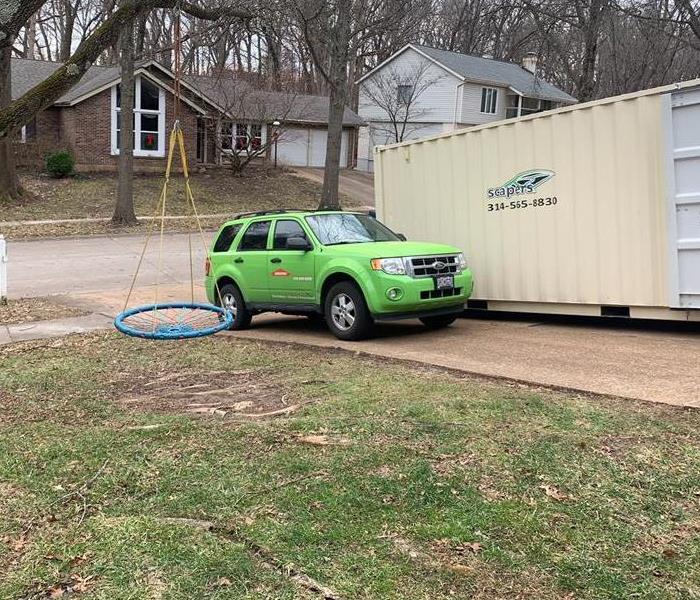 Knowing the different types of fire extinguishers to use incase of a fire is important to protect your property.
Knowing the different types of fire extinguishers to use incase of a fire is important to protect your property.
Knowing what fire extinguisher is right to use is crucial to fight a fire. We are going to explore the various types of fire extinguishers available, their applications, and step-by-step instructions on how to use them. Your safety and preparedness in the face of a fire emergency are our top priorities.
Know Your Fire Extinguishers
Understanding the different types of fire extinguishers is essential for effective fire management. There are several distinct classes of fire extinguishers, each designed to combat specific types of fires. They are typically labeled with a letter or combination of letters, such as A, B, C, D, and K:
Class A: Suitable for ordinary combustibles like wood, paper, and cloth fires.
Class B: Designed for flammable liquid fires, such as gasoline and oil.
Class C: Effective on electrical fires, using non-conductive agents to avoid electric shock.
Class D: Intended for metal fires, like magnesium or sodium.
Class K: Specifically created for kitchen fires involving cooking oils and fats.
Choosing the Right Extinguisher
Selecting the correct fire extinguisher is crucial to extinguishing the fire safely and efficiently. To make the right choice, assess the type of fire risk in your environment and install the appropriate extinguisher accordingly. For homes and offices, a multipurpose ABC extinguisher is often recommended as it can combat a variety of fires.
Using a Fire Extinguisher: P.A.S.S. Method
The P.A.S.S. method is a widely accepted technique for operating a fire extinguisher effectively:
P: Pull the Pin: Start by pulling the pin from the extinguisher. This action allows you to activate the device.
A: Aim the Nozzle: Point the nozzle or hose at the base of the fire where the fuel source is burning. This is crucial for extinguishing the fire effectively.
S: Squeeze the Handle: Squeeze the handle or lever to release the extinguishing agent. The pressure from the canister will propel the agent towards the fire.
S: Sweep Side to Side: In a controlled manner, sweep the nozzle from side to side, covering the entire fire area. Continue until the flames are fully extinguished.
Keep a Safe Distance and Evacuate
Always maintain a safe distance from the fire when using an extinguisher. Stand at a distance of about 6-8 feet, ensuring that you are not too close to the flames. Even after the fire appears to be extinguished, it's essential to remain vigilant. Fires can rekindle, so keep an eye on the area for any signs of reignition. If the fire is not quickly under control, it's crucial to prioritize your safety and that of others. Evacuate the area immediately and call the fire department.
Understanding the various types of fire extinguishers and how to use them is a fundamental aspect of fire safety. Equipping your home or workplace with the right extinguishers and ensuring that individuals are trained in their use can make a significant difference during a fire emergency. By following the P.A.S.S. method and choosing the right extinguisher, you can be prepared to act swiftly and effectively in the event of a fire, potentially saving lives and property.
Identifying Mold Infestation: Signs to Watch Out For
10/29/2023 (Permalink)
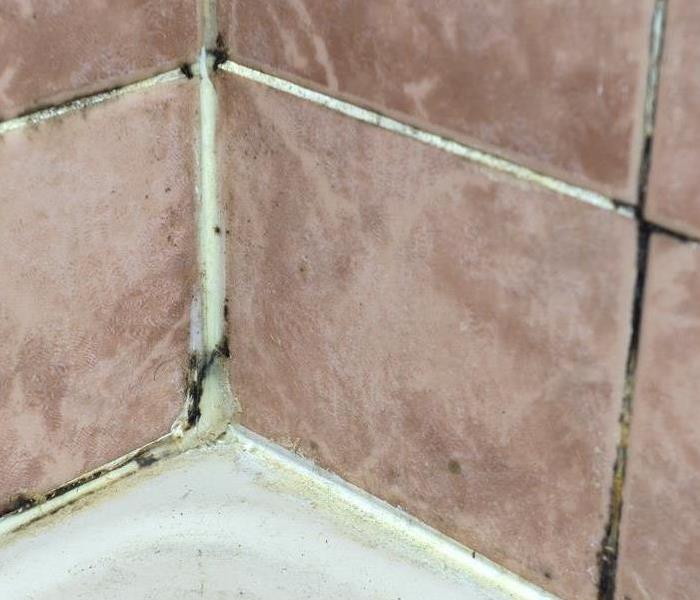 Recognize mold is crucial to protect your home incase of water or mold damage.
Recognize mold is crucial to protect your home incase of water or mold damage.
Mold infestation can go unnoticed until it becomes a visible problem. In this blog, we will explore the common signs that indicate the presence of mold in your home. By learning to recognize these signs, you can take prompt action to address the issue before it causes further damage and inconveniences.
Musty Odor
A telltale sign of mold infestation is a persistent musty odor. Even if you cannot see visible mold growth, a strong, damp smell can indicate that mold is lurking in hidden areas such as behind walls, under carpets, or in poorly ventilated spaces. If you detect a musty odor that lingers despite your efforts to remove it, it is essential to investigate further to identify and address the source of the smell.
Discoloration or Stains
The appearance of dark stains or discoloration on walls, ceilings, or other surfaces is another obvious sign of mold infestation. While mold can come in various colors, including green, black, or brown, it is essential to note any unusual patches, spots, or streaks that are persistent or spreading. These visual indicators can signify that mold has taken hold and is actively growing on the affected surfaces.
Peeling or Bubbling Paint
Mold thrives in moist environments, and one of the consequences of its growth is the damage it can cause to the surrounding materials. If you notice paint peeling or bubbling on walls, particularly in areas prone to moisture such as bathrooms or kitchens, it could be an indication of mold behind the surface. Mold growth can compromise the integrity of the walls, causing the paint to lift or bubble as moisture accumulates and the mold colony expands.
Allergic Reactions
Certain individuals may experience allergic reactions to mold without realizing its presence. If you and your family members consistently experience symptoms such as persistent coughing, sneezing, itchy eyes, or nasal congestion when at home, it could be a sign of mold infestation. Regular occurrences of these symptoms, even after cleaning or airing out the space, warrant further investigation to identify any hidden mold sources.
Increased Humidity
Another potential sign of mold infestation is increased humidity levels within your home. If you find that your indoor air feels excessively humid or muggy, it may indicate that moisture is being trapped indoors, creating an environment conducive to mold growth. High humidity can be caused by factors such as poor ventilation, water leaks, or inadequate moisture control. Keeping an eye on the humidity levels in your home using a hygrometer can help you identify any areas that may require better moisture management. Taking proactive measures to control humidity, such as using dehumidifiers or improving ventilation, can help prevent mold growth and protect your home.
Recognizing the signs of mold infestation is crucial for protecting your home and its inhabitants. By being attentive to musty odors, discoloration or stains, peeling or bubbling paint, and any allergic reactions experienced by occupants, you can swiftly address mold issues and mitigate potential damage. Early detection and intervention are key to ensuring a mold-free living environment.
The Ultimate Guide to Creating a Family Emergency Plan for Water-Related Incidents
10/3/2023 (Permalink)
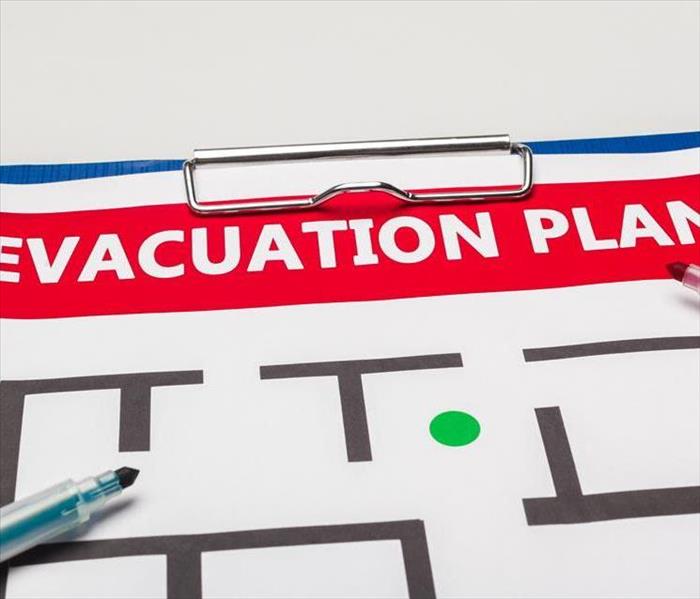 Creating a family emergency plan is crucial for the safety of your family.
Creating a family emergency plan is crucial for the safety of your family.
Water-related incidents such as flooding, burst pipes, or severe storms can be disruptive and potentially dangerous for your family. Having a well-prepared emergency plan in place can make all the difference in ensuring your family's safety and minimizing potential damage. In this blog post, we will guide you through the process of creating a family emergency plan specifically tailored to water-related incidents, enabling you to be proactive and prepared for any water-related emergency that may arise.
Identify Potential Risks
Begin by identifying potential water-related risks in your area. Research the history of floods, hurricanes, or other water emergencies in your region to assess the level of risk your family may face. Take note of any areas prone to flooding, potential issues with aging plumbing, or locations where burst pipes are more common.
Communication and Emergency Contacts
Establish a clear communication plan for your family. Designate an out-of-area emergency contact whom everyone can reach in case local communications are disrupted. Ensure that everyone knows how to reach this contact and has their phone number memorized or easily accessible. Additionally, exchange contact information with neighbors who can offer assistance in case of an emergency.
Develop an Evacuation Plan
If there is a risk of flooding or a severe water-related incident, it's essential to have an evacuation plan in place. Map out the safest evacuation routes from your home to higher ground or designated emergency shelters. Assign specific tasks to family members, such as packing emergency kits or gathering essential documents, to ensure a smooth evacuation process.
Prepare an Emergency Kit
Create a well-stocked emergency kit specifically tailored to water-related incidents. Include essential items such as bottled water, non-perishable food, first aid supplies, flashlights, batteries, a battery-powered radio, waterproof bags, extra clothing, and important documents. Ensure that everyone in the family knows the location of the emergency kit and how to use its contents.
Know How to Shut Off Utilities
Familiarize yourself with the locations of gas, water, and electricity shut-off valves in your home. Teach family members how to turn them off if necessary. In the case of a burst pipe or flooding, quickly shutting off utilities can help prevent further damage and ensure everyone's safety.
Water-related incidents can be dangerous, especially for children. Educate your family members on water safety measures and teach them how to swim if possible. Emphasize the importance of staying away from floodwaters, fast-moving water, or downed electrical wires during water emergencies.
Practice Drills and Review the Plan
Regularly conduct emergency drills with your family to ensure everyone remembers what to do in a water-related emergency. Practice evacuations, meet-up points, and utility shut-off procedures. Revisit and update your emergency plan as needed, especially if there are changes in your household or new information regarding the potential risks in your area.
Creating a family emergency plan for water-related incidents is crucial for the safety and well-being of your loved ones. By identifying potential risks, establishing communication protocols, developing an evacuation plan, preparing an emergency kit, knowing how to shut off utilities, educating family members on water safety, and practicing drills, you will be well-equipped to handle any water-related emergency that may occur. Remember, being prepared is the key to staying safe and minimizing the impact of such incidents on your family.
Tips for Minimizing Water Damage During Severe Storms
9/21/2023 (Permalink)
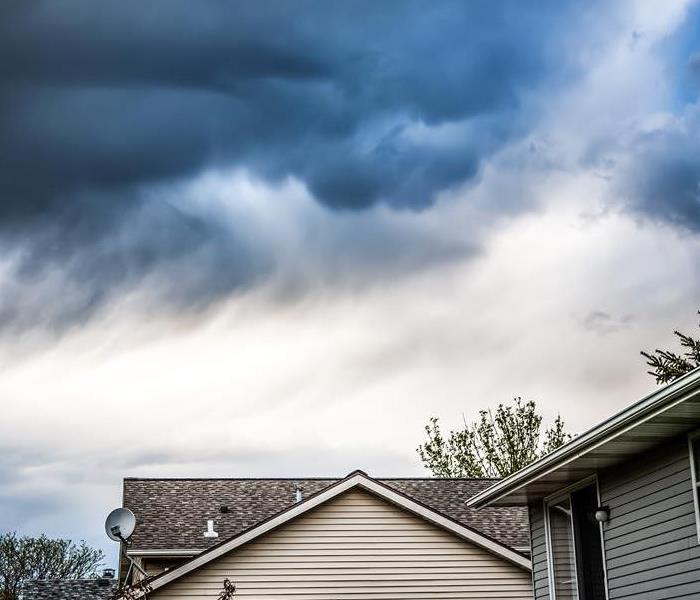 Minimize water damage by being aware and prepared to avoid damage to exterior of your property.
Minimize water damage by being aware and prepared to avoid damage to exterior of your property.
Severe storms have the potential to wreak havoc on homes and businesses, causing significant water damage. The key to mitigating the effects of water damage is preparation and quick action. In this blog post, we will discuss some essential tips for minimizing water damage during severe storms.
Maintain Gutters and Downspouts
Regularly clean and maintain your gutters and downspouts to ensure proper water flow. Clear any debris that may block the gutters and downspouts, allowing rainwater to drain effectively. This helps prevent water overflow and reduces the risk of water seeping into your home or business.
Consider installing a sump pump in your basement if you live in an area prone to flooding. A sump pump automatically removes water that collects in the basement, helping prevent extensive water damage. Make sure to test and maintain your sump pump regularly to ensure its proper functionality during a storm.
Seal Entry Points
Water can find its way into your home or business through even the smallest openings. Inspect your property for any cracks or gaps in windows, doors, and foundations, and seal them with weatherstripping, caulk, or other suitable methods. This will minimize the potential entry points for water during a storm and help protect your property.
In areas prone to flooding, it is wise to elevate your valuable belongings and important documents. Raise furniture, electronics, and appliances onto blocks or higher surfaces to keep them out of the path of potential floodwaters. Similarly, store important documents in waterproof containers, preferably at a higher level.
Install Backup Power Sources
During severe storms, power outages are common, which can hinder your ability to pump out water or address other emergency situations. Consider installing a backup power source, such as a generator, to ensure that crucial systems like sump pumps, dehumidifiers, and emergency lighting continue to operate.
If your property is situated on a slope, make sure you have proper drainage channels in place to direct water away from your home or business. This can include grading the landscape, installing French drains, or utilizing other drainage systems. Effective drainage will help minimize the pooling of water near your property, reducing the risk of water damage.
Secure Important Documents Digitally
In the event of severe water damage, important documents like insurance policies, birth certificates, and financial records can easily be destroyed. To safeguard these documents, consider creating digital copies stored securely in the cloud or on an external hard drive. This ensures that even if the physical copies get damaged, you have easy access to the digital versions.
Stay informed about severe weather conditions by monitoring local weather reports and alerts. Familiarize yourself with emergency plans and evacuation routes in your area. Create an emergency kit with essentials like non-perishable food, water, flashlights, and first aid supplies. Being prepared allows you to respond quickly and effectively during severe storms, minimizing potential water damage.
Minimizing water damage during severe storms requires proactive measures and preparedness. By maintaining gutters and downspouts, installing a sump pump, sealing entry points, you can greatly reduce the risk of water damage to your home or business. Remember, quick action during a storm can make a significant difference in mitigating water damage and preserving your property.
The Hidden Threat: Lingering Effects of Smoke Damage on Structural Integrity
8/13/2023 (Permalink)
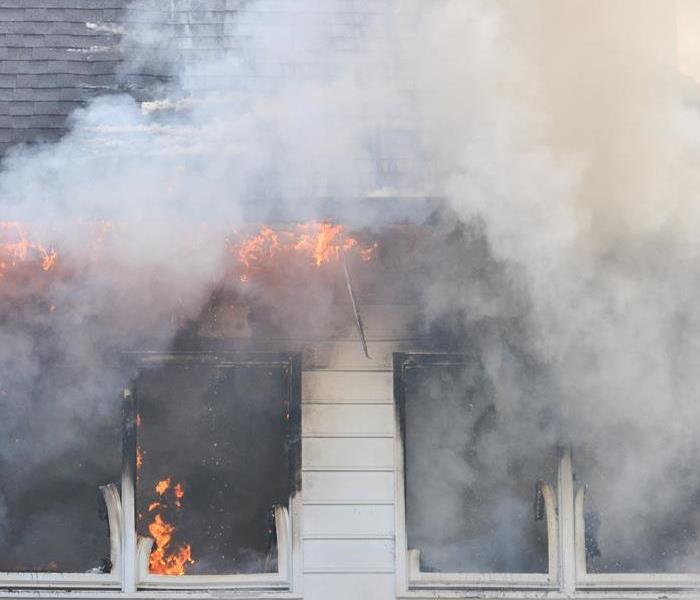 Smoke damage can weaken structural components, such as wooden beams, support columns, or load-bearing walls.
Smoke damage can weaken structural components, such as wooden beams, support columns, or load-bearing walls.
When a fire strikes, the immediate damage caused by flames is evident, but the aftermath often brings another significant threat: smoke damage. Beyond the visible soot and odors, smoke damage can have long-lasting effects on the structural integrity of your home or property. In this article, we will delve into the hidden threat posed by smoke damage and its impact on the stability and safety of your building.
Understanding Smoke Damage
Smoke damage extends far beyond surface-level issues. Smoke particles, consisting of carbon, chemicals, and other substances, can infiltrate various building materials, compromising their integrity. The combination of heat, gases, and moisture during a fire creates complex chemical reactions that contribute to the damage.
Weakening of Structural Components
Smoke damage can weaken structural components, such as wooden beams, support columns, or load-bearing walls. The heat from the fire can cause these elements to expand, while the subsequent cooling process can lead to contraction and warping. Over time, this can result in structural instability and compromise the overall strength of the building.
Corrosion and Deterioration
Smoke residue contains corrosive substances that can react with metal components, including electrical wiring, HVAC systems, and plumbing. Corrosion weakens these vital systems, posing safety risks and potentially leading to malfunctions, leaks, or electrical hazards. Regular inspections and maintenance are crucial to identify and address hidden damage.
Impact on Insulation and Fireproofing
Smoke can permeate insulation materials and fireproofing coatings, reducing their effectiveness. Insulation loses its thermal efficiency, leading to energy loss and higher utility bills. Fireproofing materials may become compromised, reducing their ability to withstand flames and slow down the spread of fire in future incidents.
Hazards and Indoor Air Quality
Smoke damage not only affects structural integrity but also impacts indoor air quality. Lingering smoke particles and toxins can be trapped in carpets, upholstery, and ventilation systems, leading to respiratory issues and other hazards. Professional cleaning and restoration, including thorough HVAC system cleaning, are essential to address these risks.
Professional Smoke Damage Assessment
Following a fire, it is crucial to engage a professional smoke damage restoration specialist, such as our SERVPRO of Oakville/Mehlville team. They will conduct a thorough assessment of the property, identifying hidden smoke damage and developing a comprehensive restoration plan. Prompt action is vital to mitigate further deterioration and ensure the safety and stability of the building.
Restoration and Rebuilding
Effective restoration after smoke damage requires a combination of cleaning, deodorizing, and repair techniques tailored to specific materials and surfaces. Professionals will employ specialized equipment, such as air scrubbers and thermal fogging, to remove odors and cleanse affected areas. Rebuilding compromised structural components may be necessary to restore the building's integrity fully.
Smoke damage from a fire can have long-lasting effects on the structural integrity of your home or property. Understanding the hidden threat posed by smoke damage is crucial for homeowners and property owners. Prompt professional assessment and restoration are essential to address structural weaknesses, prevent further deterioration, and ensure the safety and stability of the building. By taking proactive steps and working with experts, you can navigate the challenges of smoke damage and restore your property to its preloss condition.
Understanding the Most Common Causes of Water Damage and How to Prevent Them
7/14/2023 (Permalink)
Water damage can wreak havoc on your property, leading to costly repairs and potential health hazards. Understanding the most common causes of water damage is crucial in order to take preventive measures and protect your home or business. In this blog, we will explore the primary culprits behind water damage incidents and provide you with valuable tips on how to prevent them. By being proactive, you can save yourself the stress, inconvenience, and expense of dealing with water damage.
Plumbing Issues
Plumbing problems are one of the leading causes of water damage. Burst pipes, leaking faucets, and faulty plumbing fixtures can result in significant water leakage. Regularly inspect your plumbing system for any signs of leaks, corrosion, or damage. Be sure to address minor issues promptly to prevent them from escalating into major water damage incidents.
Appliance Failures
Faulty or aging appliances such as washing machines, dishwashers, and water heaters can cause water damage if they malfunction or experience leaks. Inspect these appliances regularly, paying attention to hoses, connections, and seals. Replace any worn-out parts or damaged components to prevent potential leaks or water-related accidents.
Roof Leaks
A compromised roof can allow water to seep into your property, causing extensive damage. Inspect your roof regularly for missing shingles, damaged flashing, or cracked tiles. Address any issues promptly and consider professional roof maintenance to prevent leaks during heavy rains or storms.
Weather-Related Events
Natural disasters like hurricanes, storms, and heavy rainfall can result in severe water damage. Ensure your property is prepared by maintaining a functional drainage system, including gutters and downspouts. Regularly clean and clear these systems to allow proper water flow away from your property. Consider installing storm shutters or reinforcing windows to protect against strong winds and prevent water infiltration.
Basement Flooding
Basements are particularly vulnerable to water damage due to their below-ground level. Common causes of basement flooding include inadequate waterproofing, poor drainage, or foundation issues. Maintain proper grading around your home's foundation, install a sump pump, and consider waterproofing solutions to keep your basement dry and protected.
Water damage can have devastating effects on your property, but by understanding and addressing the most common causes, you can significantly reduce the risk. Regular inspections, timely repairs, and proactive maintenance are essential in preventing water damage incidents. Remember to consult with professional restoration experts, such as our SERVPRO of Oakville/Mehlville team, for any concerns or to mitigate water damage effectively. By taking preventive measures, you can safeguard your property, avoid costly repairs, and enjoy peace of mind knowing that you are prepared for potential water-related challenges.
Battling the Elements: Weathering the Storm with Resilience and Resolve
6/29/2023 (Permalink)
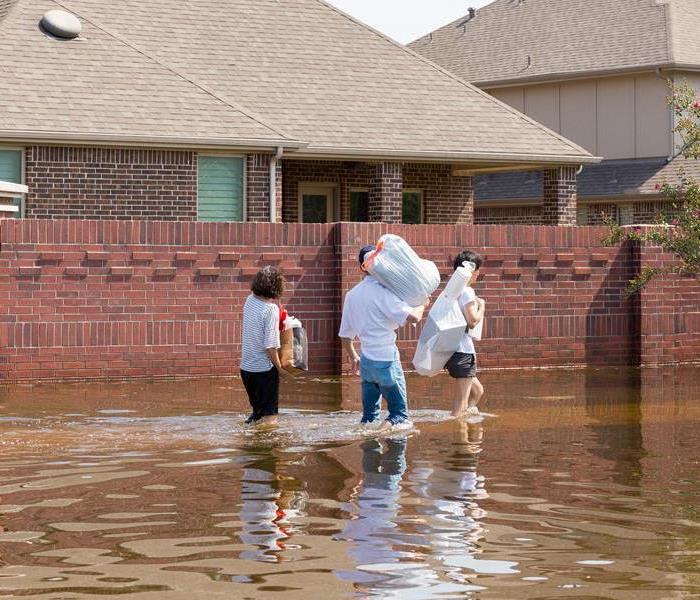 After a flood, SERVPRO can help restore your content and living environment.
After a flood, SERVPRO can help restore your content and living environment.
One of the distressing consequences of flooding is the lingering odor it leaves behind. The combination of moisture, organic matter, and stagnant water can create a musty and unpleasant smell that permeates your home. To restore a fresh and clean environment after a flood, it's important to address odor removal effectively. In this blog, we will explore proven methods and techniques to eliminate odors caused by flooding and reclaim a pleasant living space.
Safety First
Before starting any odor removal process, prioritize safety by wearing protective gear such as gloves, goggles, and a mask to avoid exposure to potentially harmful substances or contaminants present in floodwater.
Remove Water and Moisture
Extract Standing Water. Use pumps, wet/dry vacuums, or professional water removal services to remove standing water from your home promptly.
Dry Out the Area. Utilize fans, dehumidifiers, and open windows to facilitate air circulation and promote faster drying. Aim for relative humidity levels below 50% to inhibit the growth of mold and mildew, which can contribute to unpleasant odors.
Clean and Disinfect
Clean Flooded Areas: Thoroughly clean all affected surfaces, including walls, floors, and furniture, using a mild detergent or specialized cleaning solutions. Pay extra attention to areas with visible mold or mildew growth.
Disinfect Surfaces: Use a disinfectant solution recommended for flood cleanup to kill bacteria and remove any remaining contaminants that contribute to foul odors.
Treat and Remove Mold and Mildew
Identify Mold and Mildew: Inspect your home for signs of mold or mildew growth, which can produce strong odors. If present, engage in mold remediation efforts following proper guidelines or seek professional assistance.
Remove Moldy Materials: Discard porous materials that have been extensively affected by mold or mildew, such as carpeting, upholstered furniture, and insulation. Replace them with new, uncontaminated materials.
Odor Elimination Techniques
- Vinegar Solution: Mix equal parts of white vinegar and water in a spray bottle. Spritz the solution on affected surfaces and let it air dry. Vinegar is known for its natural deodorizing properties.
- Baking Soda: Place bowls of baking soda in different areas of your home to absorb and neutralize unpleasant odors. Leave them for several days before discarding and replacing with fresh ones.
- Activated Charcoal: Utilize activated charcoal or charcoal briquettes in mesh bags or containers placed strategically around the house. Charcoal absorbs odors effectively.
- Odor Neutralizers: Consider using commercial odor neutralizers or deodorizing products specifically designed for flood-related odors. Follow the instructions provided by the manufacturer for best results.
Ventilation and Fresh Air
Maximize ventilation by opening windows and using fans to circulate fresh air throughout your home. This helps remove trapped odors and promotes faster drying.
Professional Assistance
If your efforts to remove the odor are unsuccessful or if you encounter extensive mold growth, consider seeking professional help from experienced restoration specialists who can provide advanced odor removal techniques and ensure thorough restoration.
Effective odor removal from flooding requires a systematic approach that includes removing water and moisture, cleaning and disinfecting, addressing mold and mildew, utilizing odor elimination techniques, and promoting ventilation. By following these steps and exercising caution, you can eliminate unpleasant odors and restore a fresh, clean, and healthy living environment in your home.





 24/7 Emergency Service
24/7 Emergency Service




